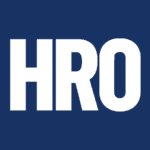While 2022 may have seen a return to some semblance of normality, it’s still remained a challenging time for HR and employees. With the cost-of-living crisis, an impending recession, and ongoing talent shortages looming, it’s clear that the future of HR will be incredibly challenging. Despite these difficult times, there is still an opportunity to create positive change within organizations. Let’s look at HR Trends for 2023: What Employers Need to Know.
Trends in human resources for 2023 will see an increased focus on the employee experience, data-driven HR, upskilling, improved onboarding and more as organizations seek to fill skills gaps, retain talent, and drive performance.
Focus on the Employee Experience
Employee expectations have shifted since 2020 and HR is seeing the impact on the quality and quantity of employee attraction and retention across all industries. Employees today don’t just want a good paycheck but a quality culture and healthy work environment as well. They are looking for:
- Putting people first – The employee experience needs to be individualized to their personal and professional circumstances.
- Flexibility – Work flexibility continues to be a significant decision-making factor for candidates applying for roles and accepting job offers. LinkedIn data this year found that postings about remote jobs still attracted 52 percent of applications compared to in-office jobs.
- Shared purpose – Employees are increasingly seeking out organizations that align with their ethics, values and politics.
- Well-being – Employees look for companies that take a holistic approach to mental, physical and emotional health.
Predictive Analytics for HR
Adopting a data-driven approach to HR and recruiting can assist in making decisions about the workforce that can improve employee retention and satisfaction. By analyzing data about employees, HR professionals can gain insights into what motivated them to join the company, what keeps them happy and engaged, and what causes them to leave. Data-driven HR can also help organizations to identify potential problems before they happen.
Reskilling and Upskilling
Learning and development will continue to be one of most important trends in human resources. In today’s economy, it’s more important than ever for employees to keep up with the latest trends and technologies. Upskilling employees gives organizations the following benefits:
- An agile and adaptable workforce.
- More opportunities to champion and develop leaders within your organization.
- Improved employee engagement and productivity.
- Motivated employees willing to take ownership of products.
Improved Onboarding Processes
Onboarding is the process of orienting and acclimating new employees to their jobs and workplace. It is an important part of the employee lifecycle, as it sets the stage for a successful and long-term employment relationship. There are a number of trends that are changing the way onboarding is done.
- More personalized and tailored onboarding experiences. Gone are the days of one-size-fits-all orientation programs.
- With the advent of digital onboarding tools, it is now easier than ever before to provide new employees with the information they need to be successful in their jobs.
More Emphasis on Soft Skills
It’s no secret that hard skills are essential in any role—after all, they give employees the confidence needed to excel at their jobs. But if you want your teams to truly thrive, then soft skills training and regular coaching should become an even bigger priority moving forward. Soft skills like communication, problem solving, creativity and empathy can help build better relationships with clients and colleagues alike—and they’re invaluable when it comes to achieving success both personally and professionally. Investing in soft skills development now is sure to pay dividends down the road when it comes time for promotion opportunities or even simple day-to-day tasks like meeting deadlines or managing workloads effectively.
Employee Self-Serviceability
In 2023, HR teams will find considerable value in doubling down on employee self-service features to increase workplace engagement and satisfaction. Employee self-service comes in the form of software portals that employees can access on their own time to manage HR, IT, and administrative processes.
Millennials and Generation Z
While the first ones are already the largest generation in the workforce, their younger counterparts, gen Z, will join them soon. It is why this year, one of the top HR trends will be understanding these two generational cohorts. These two generations have different priorities, goals, and habits than Baby boomers and gen X. If employers want to attract them, they will have to learn how to address their needs.
As you can see, there are plenty of changes coming in 2023—changes that will require organizations to adjust their strategy if they want to remain successful despite the current economic climate. By staying up-to-date with trends in human resources like focusing on the employee experience, data-driven HR, upskilling, and improved onboarding organizations can ensure they’re well equipped with the right tools and resources needed to succeed.
HR doesn’t have to be overwhelming. Partnering with HRO Resources, the HR experts, will help you stay ahead of the curve when it comes to hiring and retaining employees. Whether you are a startup or a growing company with 50+ employees, HRO has the tools you need so you can focus on guiding your team to success.

